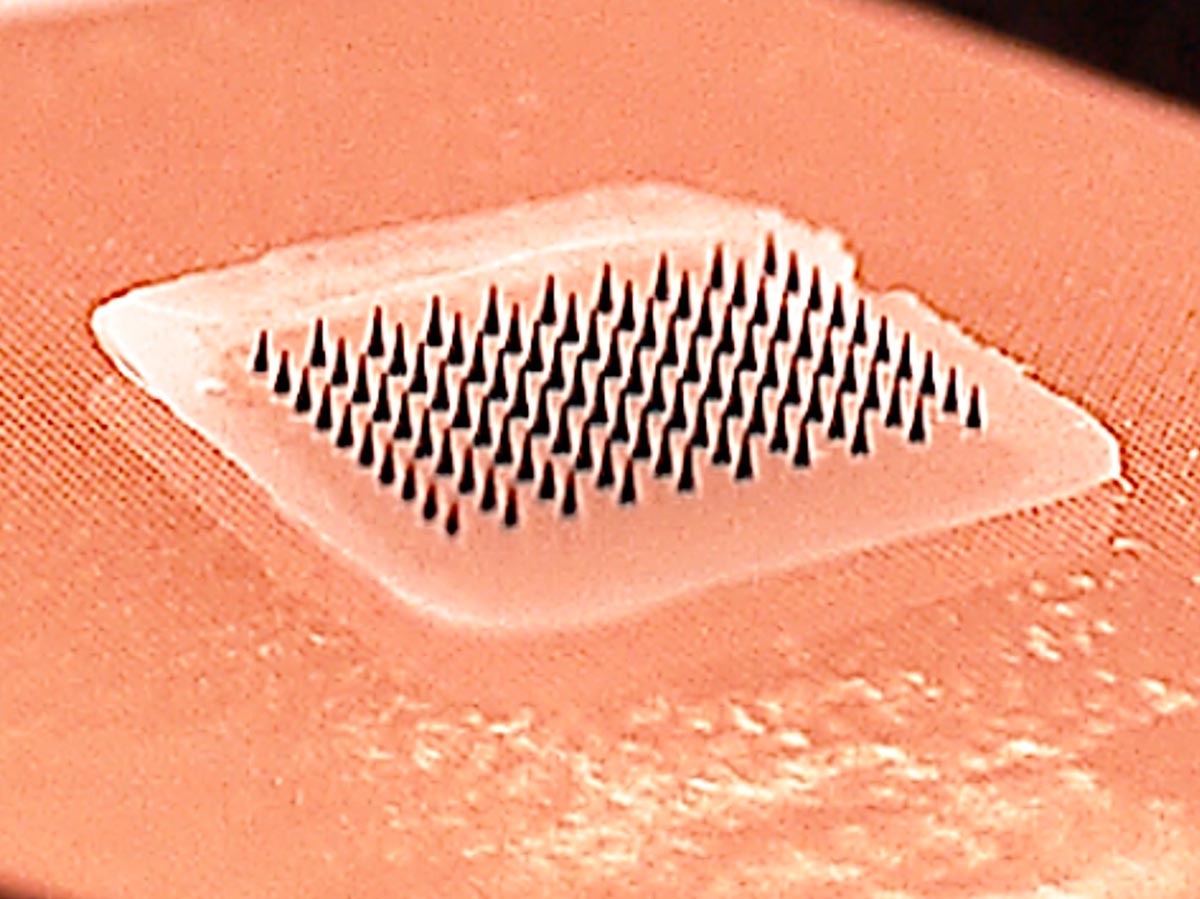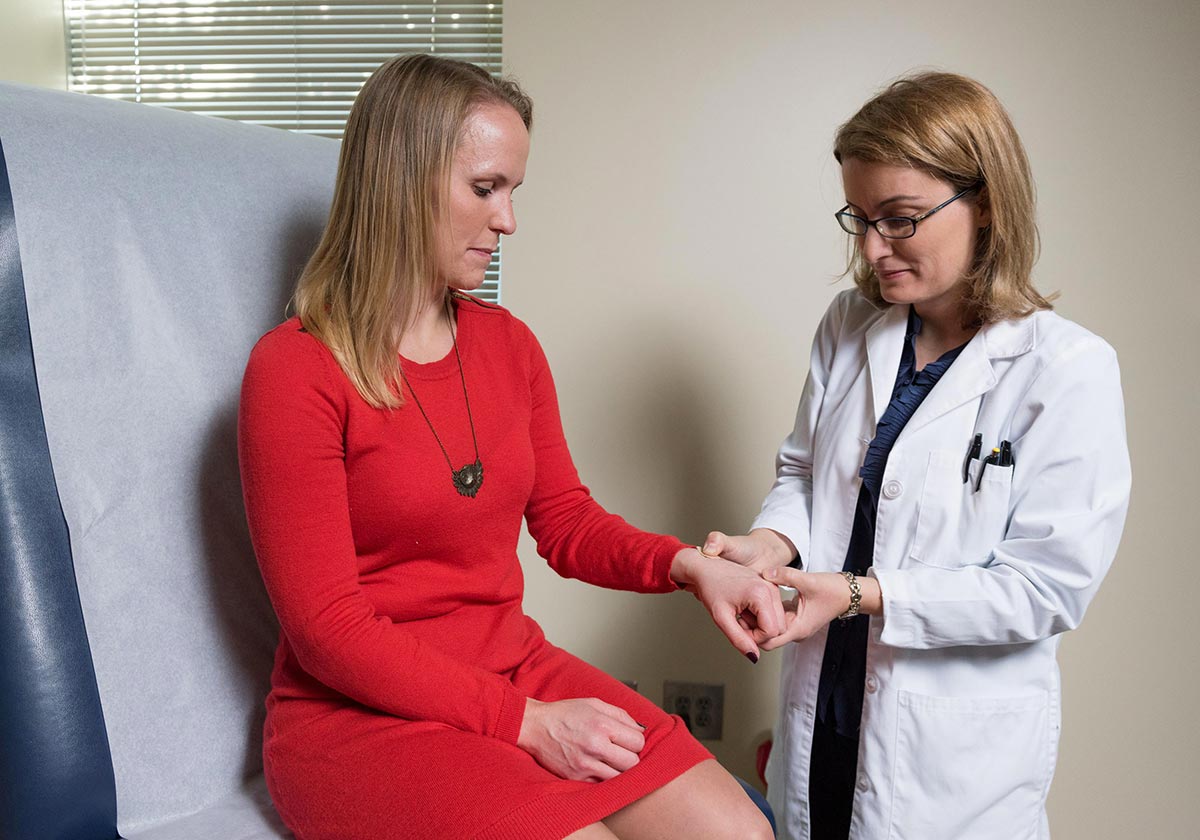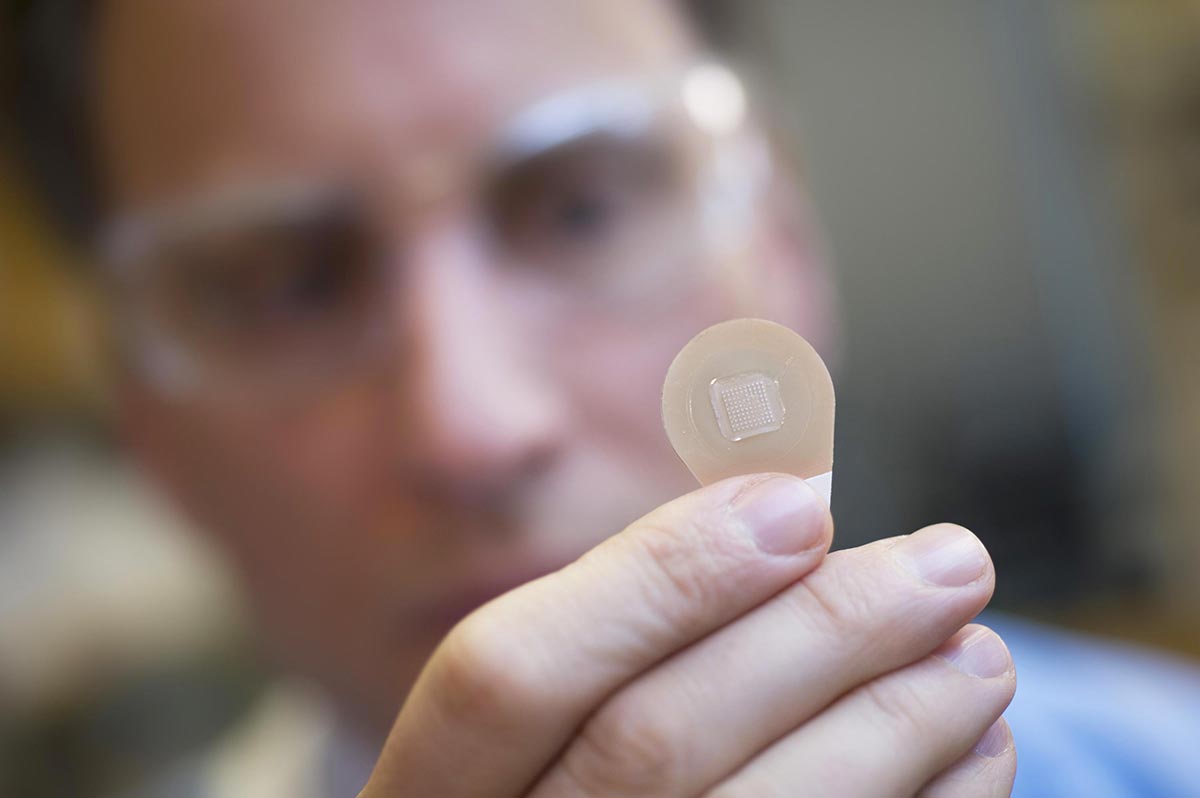An early-stage research trial has found that a microneedle patch is a safe and effective way to deliver the flu vaccine. The self-administered patch – which looks a little like a Band-Aid – has tiny dissolvable needles coated with flu vaccine.
The study, published in The Lancetby researchers at Emory University and Georgia Institute of Technology, found that the vaccine delivery method was safe and effective. It was also strongly referred by users compared to hypodermic needle and syringe.
Most European countries fail to hit the 75% flu vaccine uptake rates for people in at-risk groups such as older citizens, pregnant women and people with chronic disease. The new patch is seen as a way to overcome two major barriers: inconvenience and fear of needles.

The patch could also save money and reduce pressure on health systems by allowing people to buy it in a pharmacy and apply it at home. The technology may ultimately be used to deliver some other vaccines and helps to overcome the challenges that arise in keeping vaccines at a stable temperature during transit.
“Despite the recommendation of universal flu vaccination, influenza continues to be a major cause of illness leading to significant morbidity and mortality,” said Dr Nadine Rouphael, associate professor of medicine at Emory University School of Medicine and principal investigator of the clinical trial. “Having the option of a flu vaccine that can be easily and painlessly self-administered could increase coverage and protection by this important vaccine.”

The first-in-human clinical trial of the flu vaccine patches began in June 2015 with 100 participants aged 18-49 who were healthy and who had not received the influenza vaccine during the 2014-15 flu season.
Participants were randomized into four groups: (1) vaccination with microneedle patch given by a health care provider; (2) vaccination with microneedle patch self-administered by study participants; (3) vaccination with intramuscular injection given by a health care provider; and (4) placebo microneedle patch given by a health care provider.

“People have a lot of reasons for not getting flu vaccinations,” said senior co-author Dr Mark Prausnitz, Georgia Tech Regents professor of chemical and biomolecular engineering. “One of the main goals of developing the microneedle patch technology was to make vaccines accessible to more people.”
He said the microneedle is easier to store, use and dispose of than hypodermic needles. “With the microneedle patch, you could pick it up at the store and take it home, put it on your skin for a few minutes, peel it off and dispose of it safely, because the microneedles have dissolved away,” Dr Prausnitz said. “The patches can also be stored outside the refrigerator, so you could even mail them to people.”
The small study found no adverse events in the 100 people taking part in the trial. Local skin reactions to the patches were mostly faint redness and mild itching that lasted two to three days. No new chronic medical illnesses or influenza-like illnesses were reported with either the patch or the injection groups.
Antibody responses generated by the vaccine, as measured through analysis of blood samples, were similar in the groups vaccinated using patches and those receiving intramuscular injection, and these immune responses were still present after six months. More than 70 percent of patch recipients reported they would prefer patch vaccination over injection or intranasal vaccination for future vaccinations.
The researchers will now move on to phase II clinical trials involving more people and hope to develop microneedle patches for use with other vaccines, including measles, rubella and polio.
Watch: How are vaccines developed?
Others are also working on needle-free vaccines. Mark Kendall, a bioengineer at University of Queensland, says taking pain out of the equation could improve vaccine uptake.
“Many of us don’t like the needle and syringe,” says Kendall. “However, 20% of the population actually have a needle phobia.”
Read: Vaccine delivery: the next grand challenge
However, patches are not the only needle-free option under development. There is early-stage research on an oral flu vaccine and some countries have already introduced nasal spray flu vaccines for children.
For the time being though, it looks like vaccines will most frequently be delivered by injection – a small price to pay for protection from disease.




hakeem
August 4th, 2017
I HAKEEM QASIM KAMAL GHAZALLI i a pakistani hakeem it mean a dr my pathway with unani and ayuvedic system of medicine i treats a well cure h i v with external usages only if any a interested in my field please reply me
Pingback
March 11th, 2020
[…] Sources:https://www.vaccinestoday.eu/stories/no-needles-microneedle-patch-delivers-flu-vaccine/https://www.focus.it/scienza/salute/vaccini-senza-aghi-e-siringhehttps://www.vaccinarsintoscana.org/assets/uploads/files/151/the-safety-immunogenicity-and-acceptability-of-inactivated-influenza-vaccine-delivered-by-microneedle-patch-tiv-mnp-2015-a-randomised-partly-blinded-placebo-controlled-phase-1-trial.pdf […]